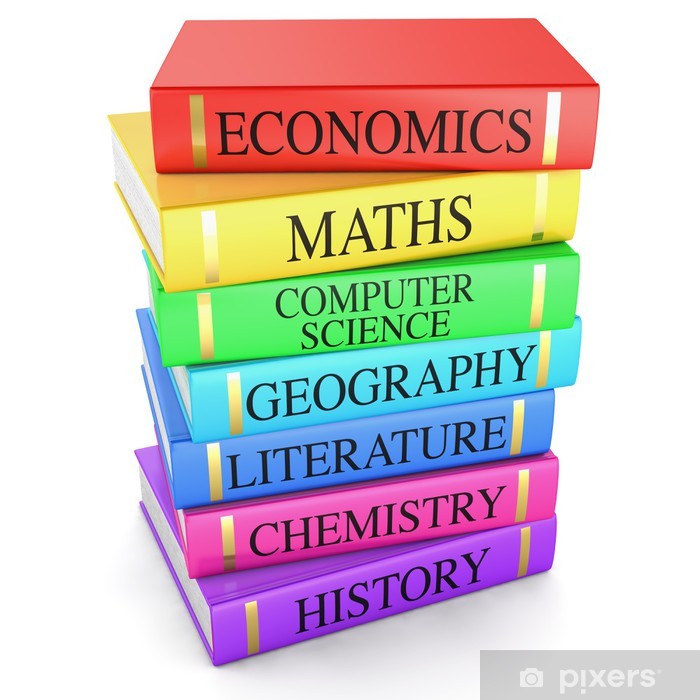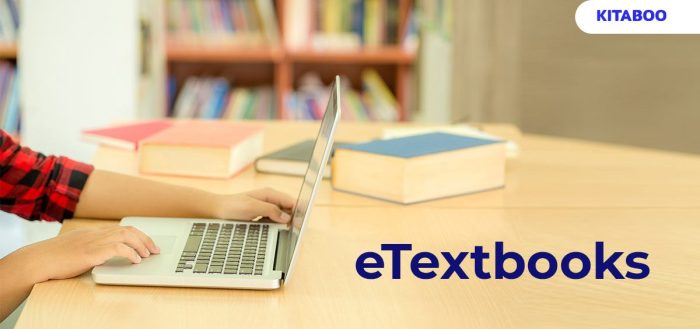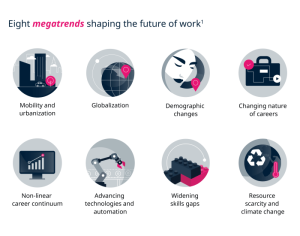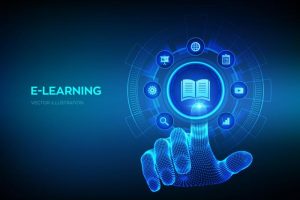
Step into the world of education where digital textbooks for schools are changing the game. From interactive learning to personalized experiences, get ready to explore the future of learning!
In today’s digital age, the shift towards using digital textbooks in schools has opened up a world of possibilities for students and educators alike. From enhanced engagement to tailored learning experiences, the impact of this technological advancement is reshaping the way we approach education.
Introduction to Digital Textbooks for Schools
Digital textbooks are electronic versions of traditional textbooks that can be accessed on various devices such as tablets, laptops, and smartphones. These digital resources offer a more interactive and engaging learning experience for students, allowing for multimedia elements like videos, animations, and interactive quizzes.
Benefits of Using Digital Textbooks in Schools
- Enhanced Interactivity: Digital textbooks provide interactive features that help engage students and improve their understanding of the material.
- Cost-Effective: By using digital textbooks, schools can save money on printing and purchasing physical books.
- Accessibility: Students can access digital textbooks anytime, anywhere, making studying more convenient.
- Environmentally Friendly: Digital textbooks reduce paper waste and contribute to a more sustainable learning environment.
Examples of Digital Textbook Platforms Available for Educational Institutions
-
Google Classroom:
Google Classroom offers a platform for teachers to distribute digital textbooks, assignments, and resources to students.
-
Canvas:
Canvas is a learning management system that provides tools for educators to create and share digital textbooks with their students.
-
VitalSource:
VitalSource is an e-textbook platform that offers a wide range of digital textbooks from various publishers for educational institutions.
Implementation of Digital Textbooks in Educational Settings
Incorporating digital textbooks into educational settings can revolutionize the way students learn and teachers teach. It involves a systematic process of integration and adaptation to ensure a seamless transition from traditional paper textbooks to digital formats.
Integrating Digital Textbooks into the Curriculum
Utilizing digital textbooks in the curriculum requires careful planning and coordination between administrators, teachers, and technology specialists. Here are some key steps in the integration process:
- Assessing the school’s technological infrastructure and ensuring compatibility with digital textbooks.
- Providing adequate training and support for teachers to effectively utilize digital resources in their lesson plans.
- Collaborating with publishers to select high-quality digital textbooks that align with the curriculum standards.
- Establishing guidelines and policies for students on accessing and using digital textbooks responsibly.
Utilizing Digital Textbooks in Teaching Methods
Teachers can leverage the interactive features of digital textbooks to enhance their teaching methods and engage students in active learning. Here are some ways teachers can make the most of digital textbooks:
- Customizing lessons and assignments based on individual student needs and learning styles.
- Incorporating multimedia elements such as videos, animations, and interactive quizzes to make learning more engaging.
- Facilitating collaborative learning through online discussions, group projects, and virtual simulations.
- Providing instant feedback and assessment tools to track student progress and adjust teaching strategies accordingly.
Success Stories of Schools Using Digital Textbooks
Several schools have successfully implemented digital textbooks in their classrooms, leading to improved student outcomes and enhanced learning experiences. Here are a few examples of schools that have effectively utilized digital textbooks:
- ABC Elementary School saw a significant increase in student engagement and motivation after transitioning to digital textbooks, resulting in higher academic performance across grade levels.
- XYZ High School implemented a flipped classroom model using digital textbooks, allowing students to access interactive content at home and engage in hands-on activities during class time.
- 123 Middle School used digital textbooks to personalize learning for students with diverse needs, leading to greater academic success and a more inclusive classroom environment.
Comparison between Digital Textbooks and Traditional Textbooks

Digital textbooks have revolutionized the way students access and interact with educational content, offering a range of benefits compared to traditional printed books.
Cost Differences
- Digital textbooks are often more cost-effective than traditional textbooks, as they eliminate printing and distribution expenses.
- Students can save money by purchasing digital textbooks, which are usually available at a fraction of the cost of printed books.
- Additionally, digital textbooks can be easily updated and revised without incurring additional costs, unlike traditional textbooks that require new editions to be purchased.
Environmental Impact
- Using digital textbooks significantly reduces paper usage, contributing to environmental sustainability by saving trees and reducing carbon emissions associated with printing.
- By opting for digital textbooks, schools and students can minimize their ecological footprint and support eco-friendly practices.
Interactive Features and Multimedia Elements
- Digital textbooks offer a wide range of interactive features, such as embedded videos, audio clips, animations, and interactive quizzes, enhancing the learning experience.
- Students can engage with multimedia elements in digital textbooks to reinforce their understanding of complex concepts and make learning more engaging and interactive.
- Interactive features in digital textbooks cater to different learning styles and preferences, making the educational content more accessible and engaging for students.
Accessibility and Inclusivity in Education with Digital Textbooks
Digital textbooks have revolutionized the way students learn by providing accessibility and inclusivity in education. These resources cater to students with diverse learning needs, ensuring that everyone has equal opportunities to succeed academically.
Catering to Diverse Learning Needs
Digital textbooks offer features such as adjustable font sizes, text-to-speech capabilities, and interactive multimedia elements that can benefit students with different learning styles. Visual learners can engage with videos and animations, while auditory learners can listen to audio recordings of the text. Students with dyslexia or visual impairments can utilize text-to-speech tools to access the content more easily.
Availability for Students with Disabilities
Digital textbooks are available in formats that are compatible with screen readers and other assistive technologies, making them accessible to students with disabilities. Publishers are increasingly focusing on creating digital textbooks that adhere to accessibility standards, ensuring that all students can navigate the content independently.
Promoting Inclusivity in Education
Digital textbooks promote inclusivity by providing a level playing field for all students, regardless of their abilities. Features like interactive quizzes, highlighting tools, and note-taking capabilities empower students to engage with the material in ways that suit their individual needs. Additionally, digital textbooks can be easily updated and customized to accommodate diverse learning objectives and preferences.
Future Trends and Innovations in Digital Textbooks
Digital textbooks are constantly evolving with emerging technologies, shaping the future of education. Let’s explore some of the key trends and innovations in digital textbooks that are revolutionizing the way students learn.
Augmented Reality and Virtual Reality in Digital Learning
Augmented reality (AR) and virtual reality (VR) are transforming the educational landscape by offering immersive learning experiences. AR overlays digital content onto the real world, while VR creates simulated environments for interactive learning. These technologies enhance student engagement and understanding by providing interactive visuals and simulations that make complex concepts easier to grasp.
Artificial Intelligence for Personalized Learning
Artificial Intelligence (AI) is increasingly being integrated into digital textbooks to personalize the learning experience for students. AI algorithms analyze students’ learning patterns and behaviors to tailor content and recommendations to their individual needs. This adaptive learning approach helps students learn at their own pace, focusing on areas where they need the most support. AI also enables teachers to track students’ progress more effectively and provide targeted interventions when necessary.
Interactive Multimedia Content
The future of digital textbooks lies in interactive multimedia content that goes beyond traditional text and images. Video lectures, audio recordings, interactive quizzes, and animations are becoming standard features in digital textbooks, offering students a more dynamic and engaging learning experience. Interactive content not only reinforces learning but also caters to different learning styles, making education more inclusive and accessible.
Education and Training Related to Digital Textbooks

Digital textbooks have revolutionized the way students learn, requiring educators to adapt to this new form of educational resource. Let’s explore the role of educators in adapting to digital textbooks and the training programs available to help them effectively utilize these digital resources.
Role of Educators in Adapting to Digital Textbooks
Educators play a crucial role in embracing digital textbooks and integrating them into their teaching practices. They need to learn how to navigate digital platforms, create interactive lessons, and provide engaging content to students in a digital format. By adapting to digital textbooks, educators can enhance the learning experience and cater to the diverse needs of students in the digital age.
Training Programs for Teachers
There are various training programs available for teachers to enhance their skills in using digital textbooks effectively. These programs provide educators with the necessary knowledge and tools to create engaging digital content, incorporate multimedia elements, and assess student learning outcomes using digital platforms. Professional development opportunities help teachers stay updated with the latest trends and innovations in digital education.
Best Practices for Professional Development
When it comes to utilizing digital resources in education, continuous professional development is key. Educators can benefit from attending workshops, webinars, and conferences focused on digital learning. Collaborating with colleagues, sharing best practices, and experimenting with new technologies can also enhance teachers’ proficiency in using digital textbooks. By staying informed and actively engaging in professional development, educators can effectively leverage digital resources to improve student learning outcomes.
End of Discussion
As we wrap up our journey through the realm of digital textbooks for schools, it’s clear that the future of education is being shaped by innovative technologies. With endless possibilities for interactive learning and personalized experiences, the potential for growth and advancement in the field of education is truly remarkable.
FAQ Guide
Are digital textbooks cost-effective for schools?
Digital textbooks can be cost-effective in the long run as they eliminate the need for frequent reprints and offer interactive features that enhance learning.
How do digital textbooks cater to students with disabilities?
Digital textbooks can provide accessibility features such as text-to-speech, adjustable font sizes, and audio descriptions to support students with disabilities.
What are some emerging technologies influencing digital textbooks?
Emerging technologies like augmented reality and artificial intelligence are revolutionizing digital textbooks by offering interactive and personalized learning experiences.





